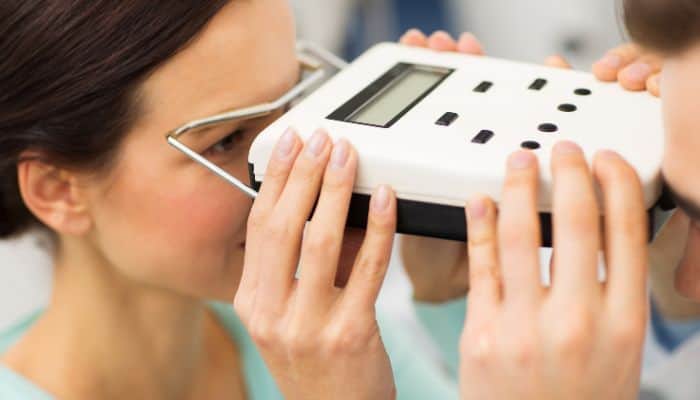(This page contains affiliate links. OGR may receive compensation if you click a link and make a purchase.)
What is PD?

Pupillary distance (PD) is the distance, measured in millimeters, between the centers of your pupils – the dark circular openings located in the center of the colored portion of your eye (the iris).
A PD measurement is crucial for opticians to align the lenses’ optical centers with your pupils’ center, allowing you to see through the lens’ most potent part.
This ensures the best visual acuity and reduces eye strain, headaches, or blurred vision. In contrast, an incorrect PD measurement can cause discomfort, double vision, or difficulty focusing on objects.
What is a Normal PD for Glasses?
The average PD for an adult ranges from 54 to 74 millimeters, with most people falling within the range of 62 to 66 millimeters.
What Happens if I Don’t Have a PD on My Prescription?
A PD measurement is required if you plan on getting prescription eyeglasses or sunglasses. Here’s what you can do:
- Ask your eye doctor during your eye exam for the most accurate measurement
- Use an online retailer that can take your PD measurement using a smartphone camera or webcam
- Measure it yourself with a ruler and a mirror
Can I Find My PD Measurement on my Glasses?
No, your PD will not be on your pair of glasses. Your eyeglasses may have a manufacturer’s code that indicates your PD, but this code is specific to the glasses’ production and not your unique PD measurement.
What’s the Difference Between Single and Dual PD?

Single PD and Dual PD refer to the way your pupillary distance measurement is taken.
- Single PD is expressed as a single number and measures the total distance between the middle of both your pupils. Also called binocular PD, it is generally used for single vision glasses.
- Dual PD, also known as monocular PD, is your pupillary distance expressed as two separate numbers (i.e., “30/32”). It measures the distance from the center of each pupil to the bridge of your nose individually. The first number is the distance for your right eye (OD), and the second is the distance to your left pupil (OS).
Dual PD is essential if your prescription varies between each eye or if you need glasses with bifocal or progressive lenses.
Since most people don’t have perfectly symmetrical faces, dual PD provides a more accurate measurement for each eye by measuring the distance from the center of each pupil to the bridge of your nose individually.